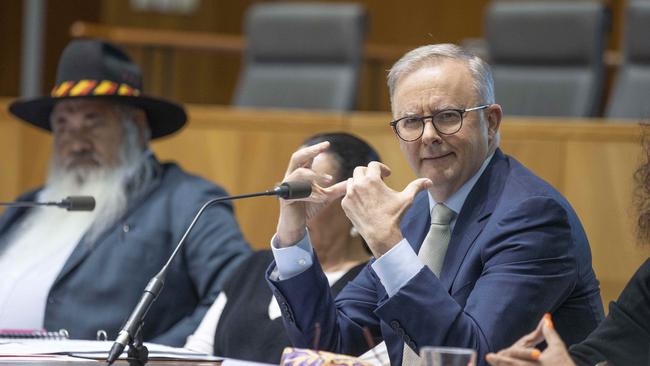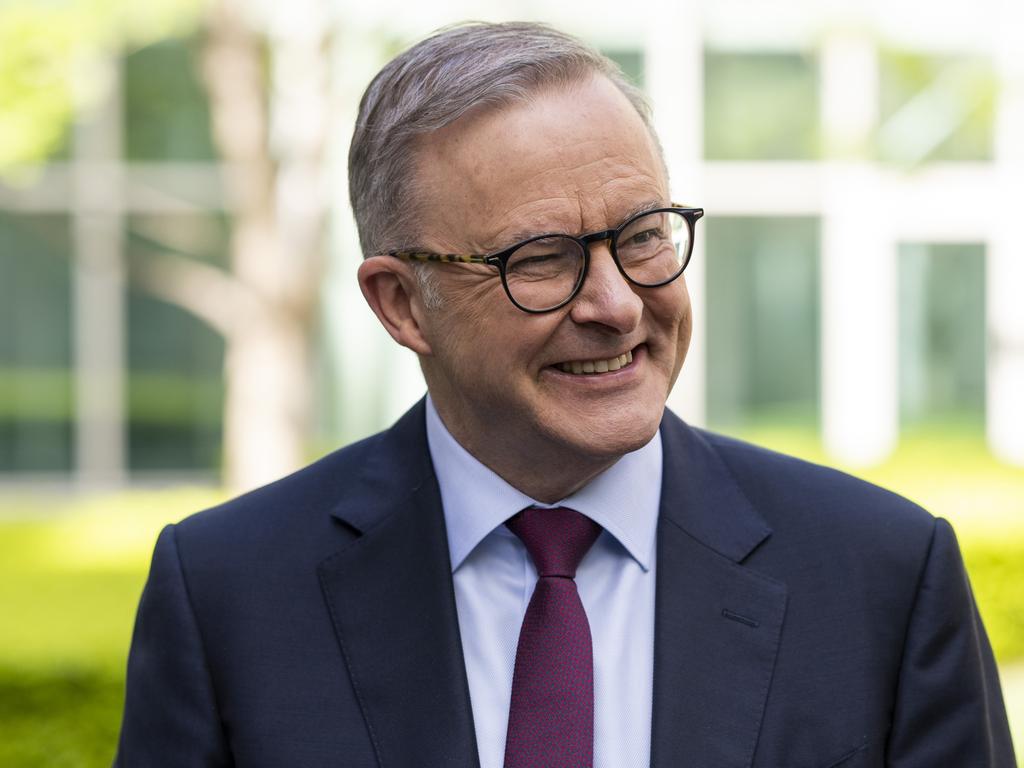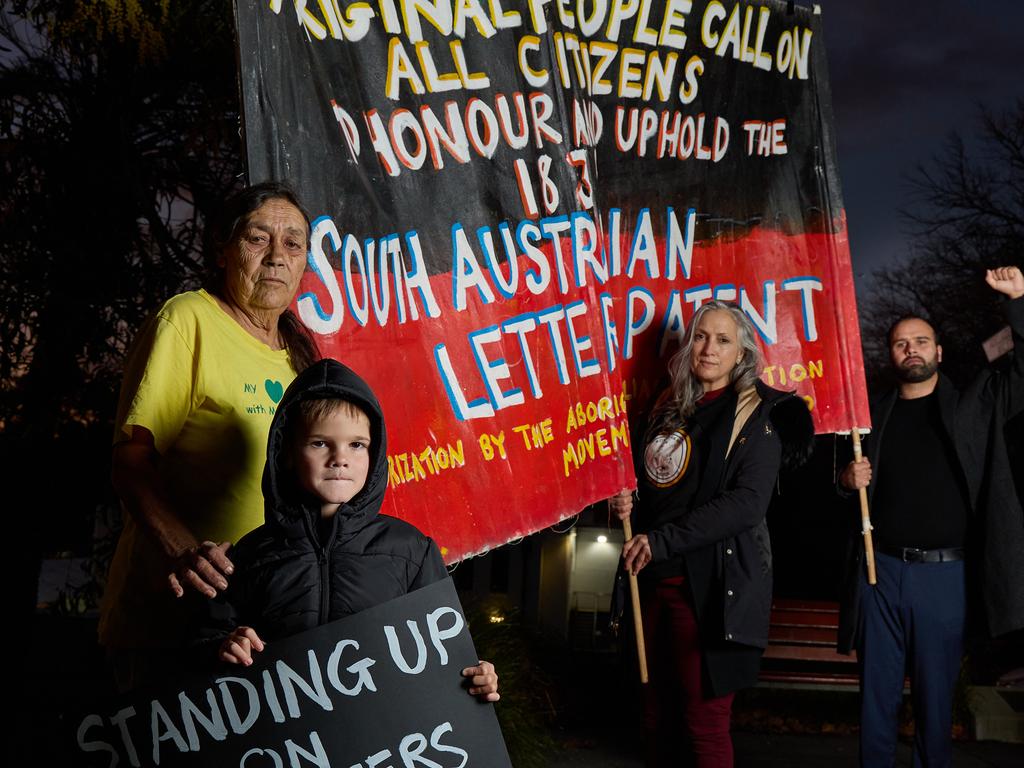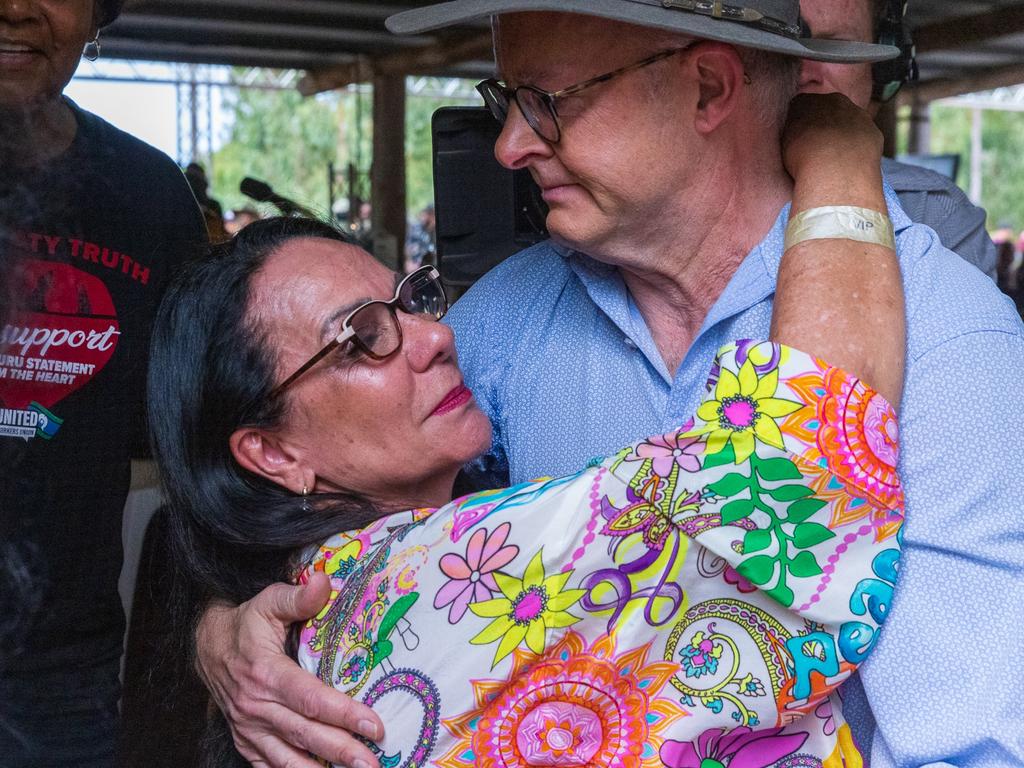Voice naysayers owe public more than just fearmongering

First is Chris Merritt’s piece, “Indigenous voice to parliament is an affront to democracy” (December 8). A journalist of considerable standing, particularly in legal circles, it surprises me that Merritt has so fundamentally misunderstood what Australians will be asked to vote on in next year’s voice referendum.
Focusing on the report developed by the senior advisory group appointed by the previous government to flesh out what a First Nations voice might look like, the article is based on the erroneous idea that a particular model will be embedded in the Constitution.
He asserts that when the Prime Minister used the report to assure parliament that a great deal of thought had been given to the potential form and function of the advisory body, Anthony Albanese was signalling his intention to adopt a particular model.
The bulk of the piece attacks the valuable work undertaken by the advisory group, appointed by the Morrison government, and headed by Marcia Langton and Tom Calma, to work with the former minister for Indigenous Australians, Ken Wyatt, “to provide overarching guidance and advice to the co-design groups on local and regional decision-making and for a national voice”.
The government accepted and published the report, developed after two years of research and public consultation. Scott Morrison said at the time: “This is not some political exercise. For us to close the gap on infant mortality in Indigenous communities, to reduce substance dependence, to reduce child abuse, to get kids in school, to ensure that we can improve maternal health, to get young people and their parents into jobs, to do that you have to work in partnership with local Indigenous communities.”
It’s hard to see how the idea represents “an anti-democratic abomination”.
But the real problem with Merritt’s thesis is that it goes on to suggest that if the government were to implement the model outlined in the Langton/Calma report, this model would be “embedded in the Constitution”.
It should be crystal clear to anyone who has read the proposed amendment, put forward by the Prime Minister in August, that the only thing Australians will be asked to approve or reject at a referendum is the establishment of an Aboriginal and Torres Strait Islander voice.
The risks that stem from the electorate being misled that they’re voting for a particular model are serious and multi-layered. The obvious one is that people who might well support the principle of an advisory body being inserted into the Constitution may be given the impression that they are embedding a detailed model that will be set in stone, with no recourse by the parliament through legislation if and when circumstances change.
But another risk is that if people actually vote Yes, thinking they are supporting a particular model, this expectation/misconception will muddy the important post-referendum phase of the exercise by making the parliament reluctant to deviate from that model, and/or adjust or update it from time to time.
That is why, if the referendum is successful, the model and accompanying legislation will be finalised after – not “implemented” by the Prime Minister, as Merritt suggests, but most likely developed through careful consideration by the parliament and in close consultation with Aboriginal and Torres Strait Islander Australians.
I recall a conversation with Noel Pearson when we served together on the Referendum Council. I was querying him on the effectiveness of any constitutional guarantee for the voice if the characteristics and function of the body were to be left to the parliament to determine.
If you do that, I asked him, doesn’t it mean there would be no constitutional guarantee of an effective body being established? In theory, the parliament could create an institution with four or five hand-picked members and no credibility.
Pearson agreed but explained that the enshrinement of the principle of the voice in the Constitution would nonetheless create a political imperative that would ensure the body retained its credibility and couldn’t be cancelled (other than via another referendum). Which brings me to the second piece, in which Janet Albrechtsen used a recent Federal Court decision, based on the statutory right of consultation exercised by native title holders in the Tiwi Islands, to argue the “constitutional consultation right” afforded to First Nations people through the establishment of the voice would lead to all kinds of potentially devastating outcomes (“ ‘Right to consult’ biggest area of Voice lawfare”, December 14).
What constitutional consultation right? The draft amendment reads: “There shall be a body, to be called the Aboriginal and Torres Strait Islander voice. The Aboriginal and Torres Strait Islander voice may make representations to parliament and the executive government on matters relating to Aboriginal and Torres Strait Islander peoples.”
Such representations will most likely lead to consultations. But as Shireen Morris highlighted in her commentary last Friday (“Voice’s ‘elegant compromise’ has addressed fears”), there is no right to consultation that would be enshrined in the Constitution. Albrechtsen is comparing apples and oranges.
Third, and most recently, the Honourable Ian Callinan has written that establishing the voice will give rise to many arguments and division – legal and otherwise (“Examining the case for the voice – an argument against”, December 17-18). He imagined a decade or more of constitutional and administrative law litigation but quite what fear he sought to describe was not identified beyond suggesting the courts might give the voice a larger role than the Constitution would give it – the power to make representations on matters relating to First Peoples. His thesis seemed to be that Australians should be afraid of what the courts would do – a remarkable proposition for any lawyer to advance.
Callinan made other points about form and structure of the voice but did not mention that all of these will be matters for the parliament to determine and redetermine as often as the need arises. All of what he says is in aid of a still further modified version of the third chamber myth – “What is proposed seems … in substance a kind of separate parliament.” Callinan makes his assertions without once referencing the proposed wording of the amendment.
We can only hope that people who already have a voice will take time over the summer break to consider the possibility that, as we saw with the Mabo decision and the Apology to the Stolen Generations, the naysayers got it wrong.
Mark Leibler is senior partner at Arnold Bloch Leibler. He co-chaired both the Expert Panel and the Referendum Council on Constitutional Recognition of Aboriginal and Torres Strait Islander Australians.






While it’s undoubtedly a good thing that the proposed First Nations voice to parliament is generating so much discussion, misinformation and disinformation disseminated by influential commentators will not assist the voting public in making an informed choice at the ballot box. In this context, I cannot allow three recent pieces published here to go unchallenged. Each of them misstates the effect of the proposal.